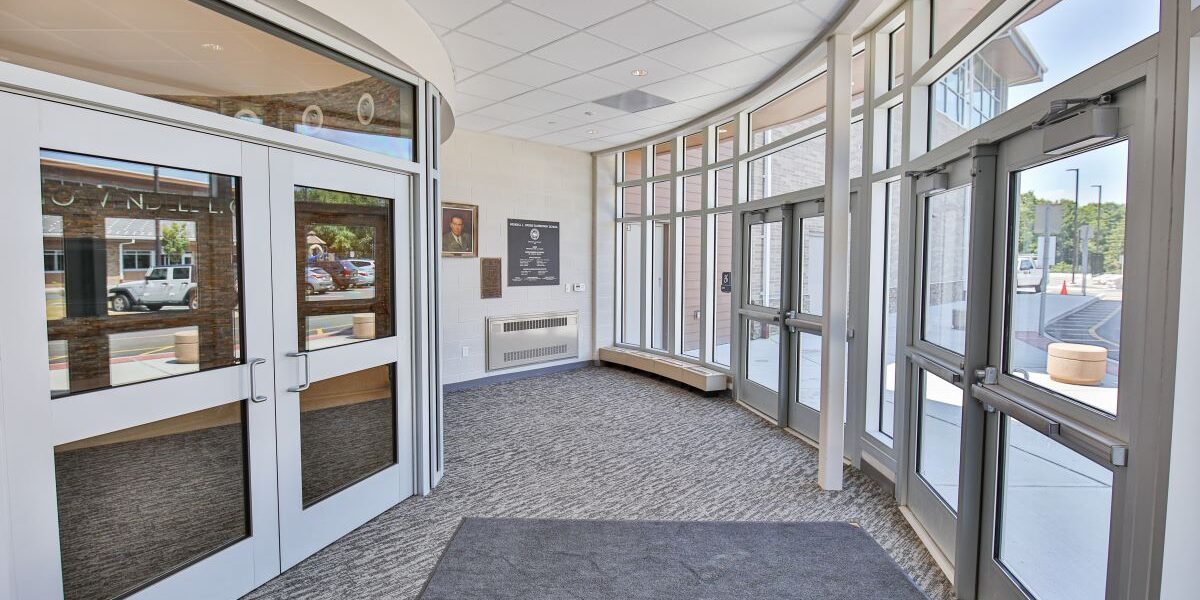Amid growing societal concerns about safety, churches and other places of worship are taking proactive steps to strengthen the security of their congregations.
Among the most effective measures is the adoption of ballistic protection, including reinforced doors, windows, and reception systems designed to resist firearm attacks.
While the term “bulletproof” often comes to mind, true ballistic protection is more complex, relying on industry standards like UL 752 and specialized engineering to provide reliable, tested resistance rather than an unrealistic promise of total invulnerability.
The term bulletproof is often misunderstood, implying that a material can withstand any firearm attack without fail.
In reality, security professionals use the term bullet-resistant to describe materials engineered to resist specific types of ballistic impacts, recognizing that no material can provide absolute protection in every scenario.
Bullet-resistant systems are designed to slow down, deflect, or absorb ballistic force, reducing the chance of penetration and providing critical delay time during an active threat scenario.
UL 752 is the North American standard for testing and certifying bullet-resistant materials. Established by Underwriters Laboratories, this standard categorizes protection levels based on a material’s ability to withstand specific types of firearm attacks.
The levels range from Level 1, designed to stop three shots from a 9mm handgun, to Level 8, capable of resisting five shots from a 7.62mm rifle.
This grading system ensures that institutions can choose protective materials tailored to the specific threats they may face, offering both practical and scalable security solutions.
Ballistic-rated doors and windows form the backbone of many security upgrades for places of worship. These elements are engineered with specialized cores and materials designed to absorb and dissipate ballistic force.
Doors may feature hardened steel cores or reinforced wood combined with ballistic-resistant paneling, while ballistic-rated windows typically consist of multiple layers of laminated glass, polycarbonate, and protective films.
This layered construction creates a resilient barrier capable of withstanding multiple ballistic impacts without shattering, allowing time for security responses or evacuations.
Among ballistic glazing options, several materials stand out.
Laminated glass, one of the most common choices, consists of two or more layers of glass bonded with an interlayer, usually made of polyvinyl butyral (PVB). This structure prevents glass shards from scattering when struck, enhancing security while maintaining clear visibility.
Polycarbonate glazing, a robust plastic alternative, offers even greater impact resistance while being significantly lighter than glass.
Glass-clad polycarbonate, a hybrid solution, combines the best features of both materials by layering glass and polycarbonate, providing enhanced durability and superior optical clarity.
The distinction between ballistic protection systems and security films often comes into question during security planning. Security films, typically applied to existing glass surfaces, are designed to strengthen glass against shattering and forced entry.
While these films offer valuable protection against break-ins and environmental hazards, they do not meet ballistic resistance standards.
A fully integrated ballistic system, incorporating reinforced frames, door cores, and glazing, offers a significantly higher level of defense and aligns with recognized industry standards like UL 752.
Implementing effective ballistic protection involves assessing the facility’s overall security needs. Churches should evaluate potential vulnerabilities—such as key entry points, windows, and common gathering areas—to identify where protective measures will be most impactful.
Each protective element should align with the institution’s specific security goals while maintaining a welcoming and spiritual atmosphere. After all, security in a faith-based setting must balance safety with an environment conducive to worship and community engagement.
Incorporating ballistic protection into church infrastructure also requires careful planning and professional consultation. Security specialists can conduct comprehensive threat assessments, identifying critical areas needing fortification.
This process involves reviewing the thickness, transparency, and configuration of protective materials to ensure they seamlessly integrate into the church’s architectural design. Customizing solutions ensures that safety measures are not only effective but also visually appropriate for religious spaces.
Access control systems also play a crucial role in enhancing ballistic protection. By restricting entry to sensitive areas, electronic access systems ensure that only authorized individuals can access secured spaces, adding another layer of security.
Integrating access control with ballistic-rated materials creates a comprehensive approach that improves both deterrence and response capabilities.
As security threats evolve, maintaining and updating ballistic systems becomes essential. Environmental wear and tear can degrade protective materials over time, making regular inspections and maintenance critical for ensuring long-term reliability.
Scheduled assessments help keep systems functioning as intended, extending their lifespan and reinforcing the institution’s commitment to safety.
Education and training also play a pivotal role in maximizing the effectiveness of ballistic protection. Church staff and volunteers should be trained in emergency response procedures, including recognizing potential threats, managing evacuations, and operating security systems. Security drills and preparedness workshops reinforce the institution’s commitment to safety while fostering a culture of vigilance and community resilience.
The financial investment in ballistic protection may seem substantial, but it is an investment in peace of mind, safety, and the well-being of congregants and staff.
By proactively addressing potential security risks, churches can create a space where worshippers feel safe and supported, allowing spiritual activities to continue uninterrupted even in uncertain times. Grants, donations, and community fundraising efforts can also help defray costs, ensuring even smaller faith-based institutions can enhance their security infrastructure.
Additionally, churches should consider developing crisis management plans tailored to their unique environments. These plans should outline communication protocols, emergency contact lists, and action steps during various threat scenarios.
Collaborating with local law enforcement can further strengthen preparedness and provide valuable insights into community-specific risks.
In conclusion, ballistic protection represents a vital component of church security, offering tailored solutions to safeguard faith-based institutions against modern threats.
By understanding industry standards like UL 752, exploring advanced ballistic materials, and integrating comprehensive security strategies, churches can enhance safety while preserving their sacred mission.
With the right balance of protection and community engagement, these institutions can continue to be places of hope, peace, and spiritual growth.
Brian Hanson is the marketing director for Specialty Fenestration Group, a consortium of leading manufacturers specializing in advanced fenestration solutions, including the Quikserv and U.S. Bullet Proofing brands, www.usbulletproofing.com. With over nine years of experience in security, transaction systems, and fenestration sectors, including bulletproof glass, Hanson has held various roles in sales, account management, and marketing, bringing a wealth of expertise to his position.
Photo credit: Lockheed Architectural Solutions




